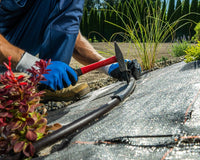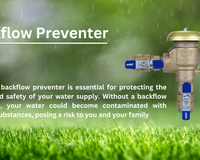Freeze-proof faucets have become a quintessential component for homeowners who want to safeguard their outdoor plumbing against the detrimental effects of freezing temperatures.
They serve as a frontline defense mechanism for your pipes, preventing costly water damage and unnecessary headaches. In this comprehensive guide, we're going to delve deep into what a freeze-proof faucet is, its intricate working mechanism, and the step-by-step process to install one yourself.
Table of Contents
- Understanding the Essence of a Freeze-Proof Faucet
- The Ingenious Design: How Freeze-Proof Faucets Operate
- A DIY Guide: How to Install a Freeze-Proof Faucet
- Frequently Asked Questions (FAQs)
Understanding the Essence of a Freeze-Proof Faucet
A freeze-proof faucet is a specialized type of outdoor spigot designed to withstand the ravages of winter. Known by various names such as frost-proof faucets, anti-siphon spigots, or freeze-proof hose bibs, they all share the same core function: to provide an uninterrupted water supply for your outdoor needs while mitigating the risks associated with freezing temperatures.

Traditionally, outdoor spigots are susceptible to freezing due to their exposure to the external environment. Freeze-proof faucets have been engineered to overcome this problem, incorporating innovative features that protect the underlying plumbing structure from freeze-related damages.
The Ingenious Design: How Freeze-Proof Faucets Operate
Let's break down the technology behind freeze-proof faucets by examining their core components and features.
Spout and Handle
Much like their standard counterparts, freeze-proof faucets come with a spout and a control handle affixed to the exterior of your home. However, what sets them apart is the internal design tweaks that fortify them against the cold.
Sloping Supply Pipe
In a freeze-proof faucet, the supply pipe is elongated and slopes downward, extending well into the insulated part of your home. This design ensures that residual water drains out through the spout, leaving no room for ice formation inside the pipe.
Interior Shut-Off Valve
Most traditional outdoor spigots have their shut-off valves located outside, making them vulnerable to freezing temperatures. In a freeze-proof faucet, the shut-off valve is ingeniously placed inside the house, usually at the end of the supply pipe. This placement eliminates the risk of water freezing behind the valve, averting potential pipe bursts.
Anti-Siphon Valve
Another critical feature is the anti-siphon valve situated at the top of the spigot. While this may not directly impact preventing freezing, it serves as a safeguard against water contamination. The valve ensures that no polluted water from your garden or elsewhere backflows into your main water supply.
A DIY Guide: How to Install a Freeze-Proof Faucet
Installing a freeze-proof faucet can be a rewarding DIY project. Here are the steps to do it successfully:
-
Consult Local Building Codes: Before you begin, check the local building codes related to outdoor faucets to ensure compliance.
-
Cut Off the Water Supply: Locate your home's main water shut-off valve and turn it off.
-
Removal of the Old Faucet: Use a pipe wrench to unscrew the existing outdoor spigot, making sure to stabilize the pipe inside your home.
-
Prepare for the New Installation: Remove any indoor pipe couplings and measure to accommodate the new freeze-proof faucet.
-
Insert and Attach: Push the new supply pipe through the exterior wall hole and attach it according to the manufacturer's instructions. Use a masonry drill bit if you need to bore into the wall.
-
Sealing and Connection: Apply silicone around the point where the faucet meets the exterior wall to seal it. Next, connect the new supply pipe to your internal plumbing using pipe-seal tape.
-
Water Flow Test: Once everything is securely connected, turn the main water supply back on to test for any leaks.

Frequently Asked Questions (FAQs)
Do Freeze-Proof Faucets Really Work?
Absolutely! Their design ensures that water drains from the spigot, preventing any freezing that could lead to a burst pipe.
Do You Need to Turn Off Freeze-Proof Faucets in Winter?
Generally, you do not need to turn off these faucets during winter due to their self-draining design.
How to Identify a Freeze-Proof Faucet?
Typically, the elongated supply pipe and the internal shut-off valve are telltale signs of a freeze-proof faucet.
We hope this guide provides you with all the insights you need to understand freeze-proof faucets better and even take on a DIY installation project. Embrace the peace of mind that comes with this small yet impactful home upgrade.





